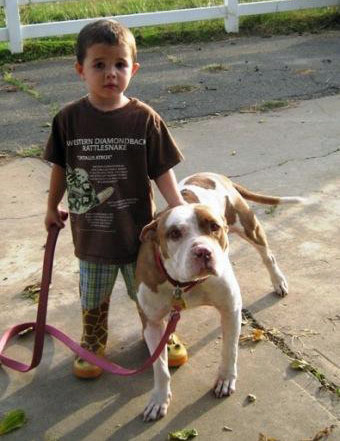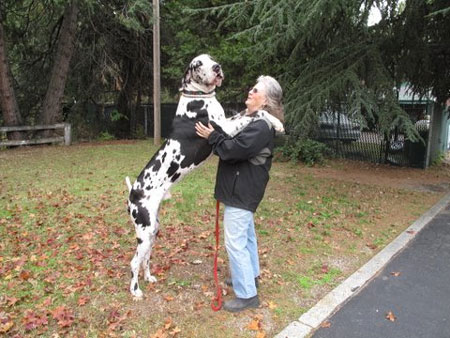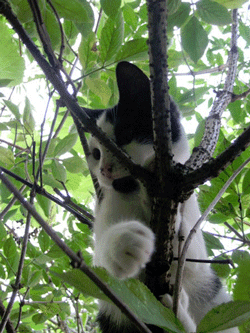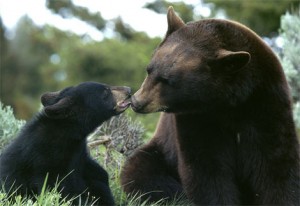This video has been viewed over 26,000,000 million times!
httpv://www.youtube.com/watch?v=Zi9GOvR3Ynw
Enjoy!
This video has been viewed over 26,000,000 million times!
httpv://www.youtube.com/watch?v=Zi9GOvR3Ynw
Enjoy!
Here’s another funny cat video. This one has been viewed over 3,500,000 times!
httpv://www.youtube.com/watch?v=IytNBm8WA1c
John O’Dell is a licensed real estate broker helping you to sell or buy real estate property. He is also a licensed general contractor and civil engineer.

“Source: Lori Perry
Precious is an American Staffordshire Terrier that was rescued from a high-kill shelter. Before that she was severely mistreated by her owner. She has suffered much, most recently bloat, diabetes and a thyroid condition. She was literally starving to death. Thanks to a quick pull by one of our rescuers, the wonderful staff at Johnson Ranch Vet Clinic and Patty, her amazing foster Mom, Precious is on her way back to the healthy life that she deserves.
Precious has special needs. She needs someone who is willing to feed and medicate her properly on a regular basis. She gets along great with other dogs and likes people. She needs space to run and play because she was in a cage for far too long.
Her most important need is to find than one special home that is out there waiting for her. She needs love, affection and understanding. She needs a guiding hand to show her good manners and that there are kind hearted people in the world willing to share their life with her. Call Patty at 916-204-3407 or email SacCaninePlacementASsistance@gmail.com.”

This is very uncanny, Precious looks almost identical to my dog Angel. Please see if you can help Precious, after all she’s been through, she really needs a good home.
Click here to see more dogs ready for adoption Scooters Pals
John O’Dell
Real Estate Broker
General Contractor
Civil Engineer
This is a cute video or Kinslou around the house and going for a swim.
httpv://www.youtube.com/watch?v=8wic_MjEyBM
Here’s a video from our cat friends. This video has been viewed over 3,366,000 times. I hope you enjoy it.
httpv://www.youtube.com/watch?v=IytNBm8WA1c
John O’Dell
Real Estate broker
Residential and land sales.

by Lisa J. Lehr
Nevada County is a very pet-friendly place. Most of us here have one or more pets. And pets, over the generations, have enjoyed a status upgrade from outdoor animal to family member, albeit one who lies under the table at mealtime rather than sitting in a chair like the other family members. Many people—including me—believe that a family without pets is incomplete, and a childhood without the experience of raising pets is a disadvantaged childhood.
That experience, though, almost invariably includes the death of a pet. It’s a fact that most people outlive most types of pets; almost all children who have a pet will, at some point, lose one. As difficult as it is for the kids—not to mention for the parents who must explain death—it’s an important life experience.
Sadly, some parents try to spare their kids the pain of losing a pet with some type of coverup—by offering another explanation for the pet’s disappearance, or by concealing the death entirely. The first scenario, mostly used with dogs and cats, usually involves saying it “ran away.” The “ran away” story is offered either when the pet is known to be dead, and the parents have discreetly disposed of the body; or when a pet has disappeared, its fate unknown. Bad things sometimes happen when pets go outdoors, and sometimes old or ill pets will go away to die alone.
The second coverup method is most often used with small pets—fish, turtles, reptiles, perhaps rodents. In these cases, the parent removes the deceased pet while the kids are at school or asleep, replacing it with a similar one and hoping the kids won’t notice.
Continue reading The Truth About Cats and Dogs: Helping Kids Cope With a Pet Death

I happened to be walking directly across the highway from my office in Cedar Ridge to the dog groomers to see if I could get an appointment to have my dog Angel get her nails trimmed. Sandy Hall, famous for owning the tallest dog in the world happened to be there and I asked her if I could take a picture of her latest dog Brewster.
Sandy owned Gibson, who stood 42.6 inches tall, measured from the ground to the top of his shoulders and measured 7 feet 1 inch all stretched out and standing on his hind legs. He weighed 180 pounds. Gibson passed away on August 7 of this year due to bone cancer.
The dog in the picture is the latest dog that Sandy owns and is only 14 months old. Sandy says the dog will continue to grow until he is three years old. He weighs in at 140 pounds right now and as you can see in the picture, is pretty darn tall already.
Sandy is very determined to raise money to help fight canine bone cancer and is working with an organization called Morris Animal Foundation.
For more information about Gibson go to Gibsondog.com and for PiMorris Animal Foundation go to Morris Animal Foundation
Site was corrected November 23, 2009 Sorry about that Sandy!

“Ever see a cat skeleton in a tree?”
This sarcastic question is usually intended to “prove” that cats never get stuck in trees. When they feel like coming down, they will, goes this misguided thinking. The premise of the lame joke, however, is utter nonsense. Cats do get stuck in trees. They do die. Here’s why, and what to do if your cat (or a cat you know) ever gets stuck in a tree.
A cat usually climbs a tree for one of two or three reasons: she’s chasing something (like a squirrel), she’s running away from something (like a dog), or perhaps she just wants to see what’s up there. Okay, so Kitty is way-high-up in a tree, the danger (or the fun or the mystery) is gone, and it’s time to come down. Why doesn’t she come down on her own?
A cat’s claws are designed for climbing up. A cat is not a squirrel; squirrels can climb up, down, and sideways, always headfirst, no problem. But a cat must climb with her head up to avoid falling, and once she’s up, the only way down is to back down. (The margay, or tree ocelot, a rare cat found in the rain forests of Mexico, Central America, and South America, is the only cat that can climb down a tree headfirst.)
Once she’s close enough to the ground, she’ll turn around and jump down; the biggest challenge is a tree that has no low branches, like a pine tree. By the time the immediate danger or curiosity has passed, Kitty has used her burst of adrenaline and does not have enough energy left for the time-consuming, frightening task of descent. This is especially true of an indoor cat with little or no climbing experience.
The good news is, cats have been known to survive over a week in a tree and have sustained falls of over a hundred feet without serious injury. The bad news is, a panicked cat will continue to go…up. Worse, a cat may eventually become too weak to climb down, and after a point, even if rescued, may die later of starvation, dehydration, or exposure.
We don’t see cat skeletons in trees because of a well-known law of nature called gravity: Kitty becomes too weak to hold on, lets go, and falls.
What do you do?
If the cat is not too high—a distance you feel confident climbing yourself—wear gloves, long sleeves, and long pants. Take a pillowcase and rope with you. Make the first grab count; if you only succeed in scaring Kitty, she may go higher. Grab her by the scruff of the neck and stuff her into the pillowcase; secure it with the rope and lower it carefully to someone on the ground. Take the bagged kitty indoors before opening the pillowcase.
If you can’t manage the rescue yourself, wait no more than a couple days. That’s about the longest it will take Kitty to decide to come down if she can. Call your cat. If it doesn’t encourage her to come down, it will at least let her know she’s not forgotten. Keep dogs and other unnecessary commotion away. Try tempting her with food.
If your cat does not meow, it means one of two things: she’s too weak to do so (bad) or she doesn’t feel she is in trouble (good). Unfortunately, you can’t tell which it is.
Get help sooner rather than later if:
Who’re you gonna call?
Continue reading Cat stuck in a tree: if they could come down, they would

In a very unusual accordance, Canadian folk singer Taylor Mitchell, 19, was killed by coyotes in a national park in Nova Scotia, according to a park spokesman.
Taylor Mitchell, 19, was at the beginning of the Skyline Trail in Cape Breton Highlands National Park on Tuesday afternoon when she was attacked, according to Chip Bird, the Parks Canada field unit superintendent for Cape Breton.
Bird said hikers saw the coyotes attacking Mitchell and called 911. She was airlifted to a hospital in Halifax, where she died about 12 hours later, he said.
For those of you who have been reading my blog, I wrote about my dog, Angel, being attacked by coyotes. This happened sometime ago when I let her out of my backyard. When she did not come back right away, I started calling her and she finally came up the stairs all bloody, with torn flesh and puncture wounds, completely wiped out. After a visit to the vet and a routine of antibiotics she recovered completely.
This led me to a little research about coyotes and it is indeed rare for coyotes to kill anyone. The last recorded killing of a human by coyotes was in Los Angeles, when an 8 year old girl was killed in 1980. However, coyotes carry all kinds of diseases, including rabies. So don’t feed them, they become used to human beings, resulting in future attacks of humans. Here are some more facts about coyotes:
A typical coyote attack to a sheep or goat is to bite the throat just behind the jaw and below the ear, causing death from suffocation and shock.
Coyotes have justifiably a huge fear of humans. Usually coyote attacks on people occur when a coyote has become comfortable around people, often as a result of people feeding them. (Living With California Coyotes (pdf); National Wildlife Federation)
In the rare event that a coyote attacks you or someone near you, yell at the coyote to make it back off. Don’t run away since a coyote can outrun you (unless you can run faster than 30 mph!). (Los Altos Town Crier 7/24/96; Coyote Fact Sheet)

Coming home late from the office the other night, late enough that it was pitch dark, I saw a black bear crossing Banner Mountain Quaker road. Fortunately, I was driving slowly so I did not hit the bear and I got a good look at him. What a beautiful animal, big, with huge feet. From the back, other than its feet, it looked like a giant long haired black dog.
Black bears are fairly common in Nevada County and every once in a while they get a little ornery. One of my neighbors had his garbage can pilfered several times, dumping garbage all over the road. So he thought well, I’ll just strap the cover down and the bear will not be able to get into the garbage can. The next morning, he found his garbage can down the side of the mountain with big claw marks on the can. The solution was to put the garbage out first thing in the morning instead of the night before garbage was to be picked up.
The American Black Bears are from 5-6 feet in length and about 2.5 to 3 foot tall. They can stand as high as 7 tall which would be enough to scare anyone away. They can weigh as much 600 pounds for the male and about 400 pounds for the female. There have been reports of a male bear that weighed 880 pounds, but that is unusual.
Most of the time, they are as scared of you as you might be scared of them, so they tend to run when approached by humans. However, be careful if you come across of a female with cubs, then it is different story. They’re out to protect their cubs at which point they can become aggressive. If it’s any consolation, there are only 56 documented cases of black bears killing humans in the United States in the last 100 years.

According to Wikipedia
“The cubs are generally born in January or February. They are very small, about 283 to 397 grams (10 to 14 oz), and are blind, nearly hairless, and helpless when born. Two to three cubs are most common, though up to four and even five cubs have been documented. First-time mothers typically have only a single cub. The mother nurses the cubs with rich milk, and by spring thaw, when the bears start leaving their dens, the cubs are fur-balls of energy, inquisitive and playful. By this time, they are about 2 to 4 kilograms (4 to 8 lb). When their mother senses danger, she grunts to the cubs to climb high up a tree. They are weaned between July and September of their first year and stay with the mother through the first winter. The cubs become independent during their second summer (when they are 1.5 years old). At this time, the sow goes into estrus again.
Cub survival is totally dependent on the skill of the mother in teaching her cubs what and where to eat, how to forage, where to den, and when and where to seek shelter from heat or danger.”
There have been numerous sightings of black bears in the Cascade Shores Subdivision, in which I live. I had one standing on the road in front of my house last year during the night. Have you seen any black bears around your house or had some experience with them?